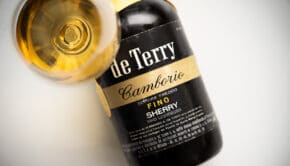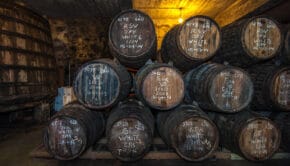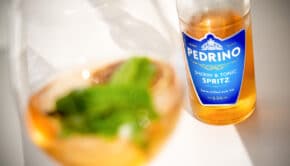Sherry wine: a five minute introduction
There are plenty of detailed articles on this website, but perhaps you’re in a hurry and you’d like to get the basics quickly. This sherry primer gets you started and shouldn’t take more than five minutes to read. Several links invite you to investigate specific topics in depth.
Sherry: a unique Spanish wine
Sherry is essentially a fortified wine, starting with a white wine to which extra alcohol (distilled grape juice) is added. It can only be produced in a small region in Andalusia, in South West Spain. The sherry triangle is formed by three key cities: Jerez de la Frontera (hence the name Jerez > Sherris > Sherry), Sanlúcar de Barrameda and El Puerto de Santa María. Besides this triangle there are six neighbouring municipalities that can produce (grapes for) sherry wines.
Typical for this region is Albariza, pure white soils with a high level of chalk / limestone. Traditionally three grapes can be used for the production of sherry: Palomino, Moscatel and Pedro Ximénez. Palomino is a high yielding variety which produces wines of low acidity and modest fruitiness – instead it is good at expressing the coastal minerality of the soil. On the other hand Moscatel and Pedro Ximénez are used to produce sweet sherries with the same name. After 2022 a number of other historic grape varietals are also allowed.
Sherry is one of the oldest denominations of origin in Spain, founded in 1933. Read more about the D.O. Jerez-Xérès-Sherry or visit the official website of the D.O.
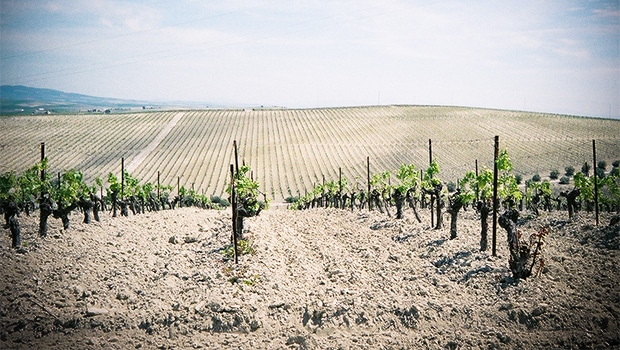
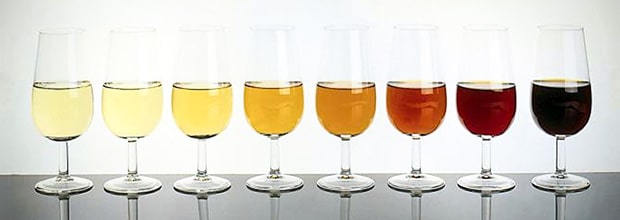
Dry styles of sherry wines
Although most people automatically think of sweet sherries, the majority of sherry wines is actually dry.
Dry sherry exists in two types:
- biologically aged sherry (pale Fino / Manzanilla) which matures under a layer of flor (closed off from oxygen)
- oxidatively aged sherry (red-brown Oloroso) which is aged without flor, interacting with the oxygen inside the barrels
Flor is a layer of yeast cells that forms inside the barrels, on top of the wine. In humid bodegas the development of flor occurs naturally – in fact sherry bodegas are specifically designed to provide the perfect conditions for this flor to thrive. Adding more alcohol to the base wine blocks / stops the development of the flor, makes the wine age oxidatively and gradually change colour.
Furthermore two hybrid types of dry sherry exist: Amontillado and Palo Cortado are sherries that start their life as a Fino type (biological ageing) but lose their layer of flor along the way and have a second, oxidative ageing phase (usually longer).
Sweet sherry
Sweet sherry is produced by picking Pedro Ximénez (PX) or Moscatel grapes late and drying them in the sun for maximum concentration of sugars, or by stopping the fermentation early. This results in a naturally sweet wine.
On the other hand there are Medium or Cream sherries: blends of dry wines with sweet wines or grape syrup, with varying levels of sweetness (Cream > Medium > Dry). The category was given its name by the famous Bristol Cream that was hugely popular in the 1960-1980s but is now losing popularity.
More about the production of sherry wines
A list of all types of sherry

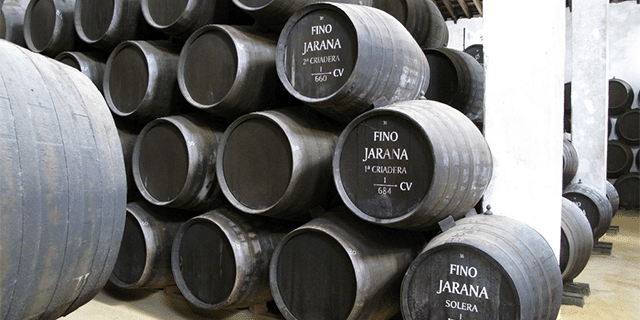
Sherry: aged in a solera
Sherry wines are generally matured in the unique solera system. It is an ensemble of barrels arranged in groups, each with a slightly higher average age. Think of it as a waterfall system: the final wine is bottled from the oldest barrels at the bottom, which are then topped up with slightly younger wine from the previous stage or criadera, and so on. The youngest criadera receives the new wine from the latest harvest. Mind that barrels are never emptied: in general they will never transfer more than 1/3rd of the contents at one time.
In the long run a solera results in a wine that is a continuous blend of different vintages, so any age mentioned on the label is an average age of all wines involved. Mind that vintage sherry from a single harvest also exists, although it is quite rare. Vintage sherry is often aged statically, not in a solera. Only specific age statements can be mentioned on the label: 12 / 15 Years Old, and VOS / VORS (20 / 30 Years).
Storing, serving and pairing sherry wines
Sherry should be stored upright, in a cool and dark place. Fino and Manzanilla should be treated like other white wines: don’t wait too long to open them, and once opened they’ll only stay fresh for a few days in the fridge. Other types of sherry which undergo some oxidation are more stable and can be kept longer, even in an open bottle. Remember to serve sherry in a proper wine glass that you would use for white wine, with a sufficiently wide opening.
Moreover, due to its wide array of different styles and aromas, sherry is a wonderfully flexible wine at the table. Fino / Manzanilla is a great aperitif: pair it with seafood, vegetables or sushi. Amontillado / Palo Cortado goes well with white meat or spicy Asian food. Oloroso is for red meat with sauce. All dry varieties pair well with dried ham, olives, cheeses and nuts. PX / Moscatel are dessert wines (think chocolate or blue cheese). See my dedicated article on wine pairing: sherry with food.
More about the storage of sherry wine
All things considered, you’re probably thirsty now, so here’s one last advice: where to buy sherry? Enjoy!




